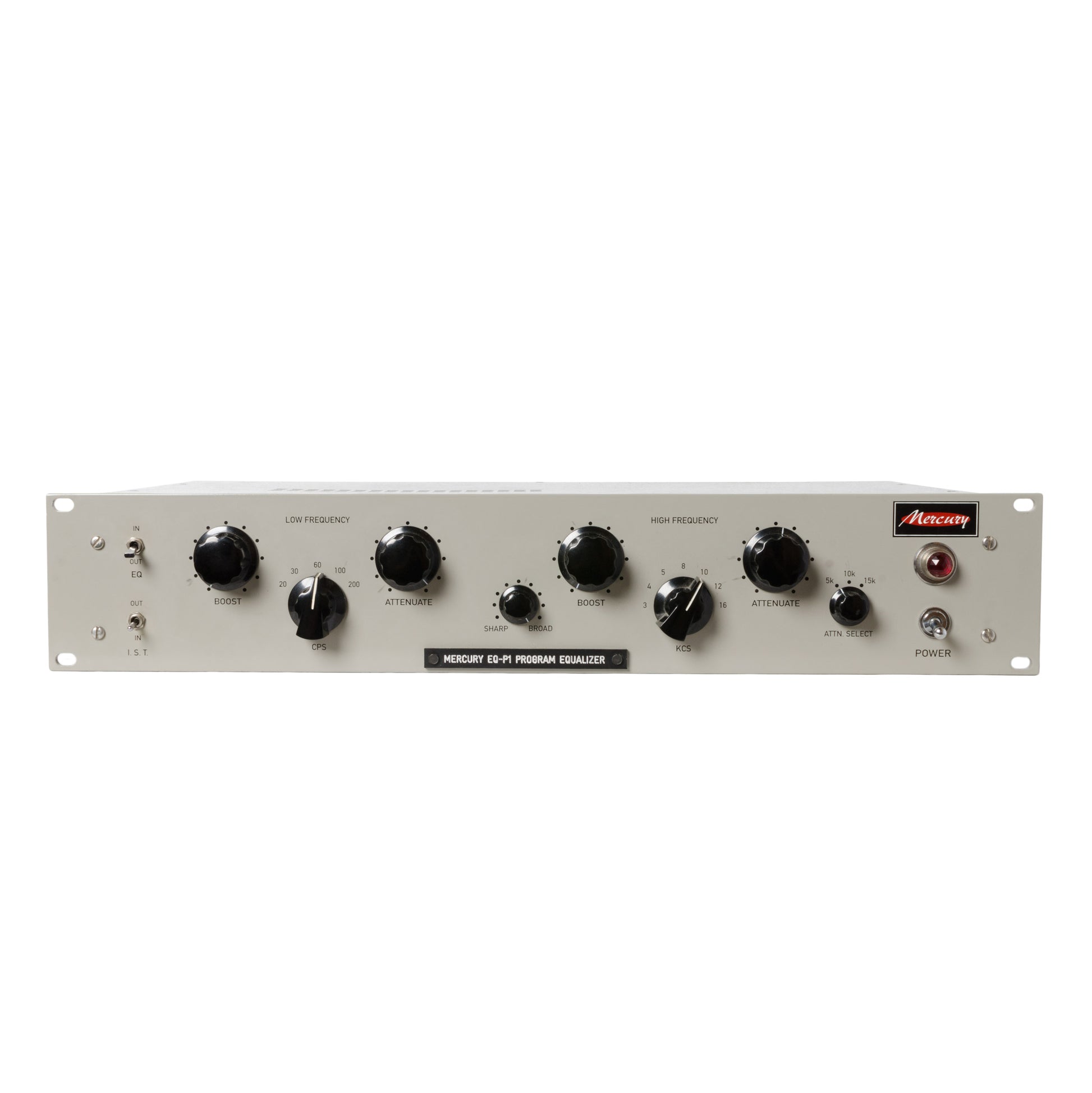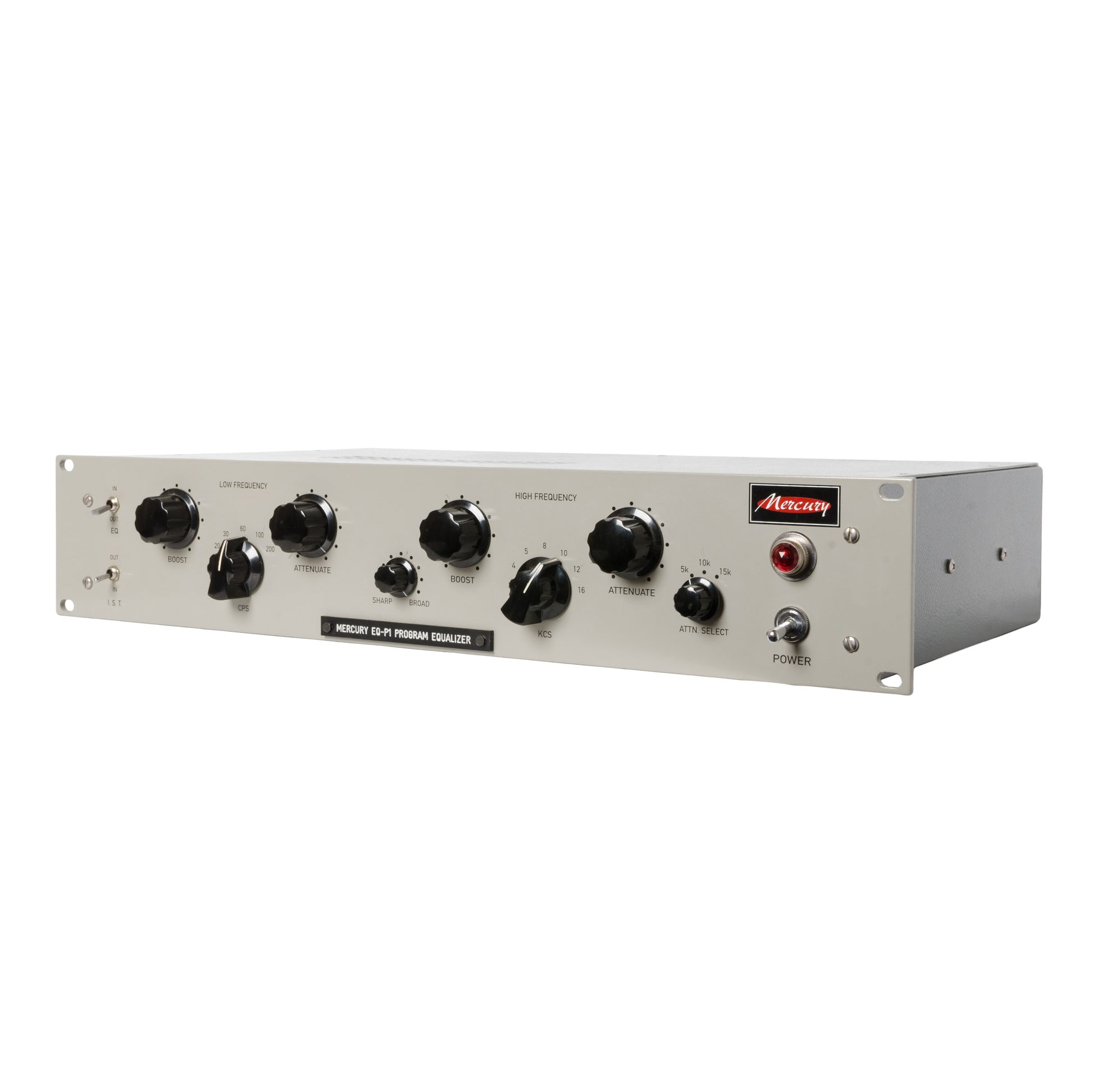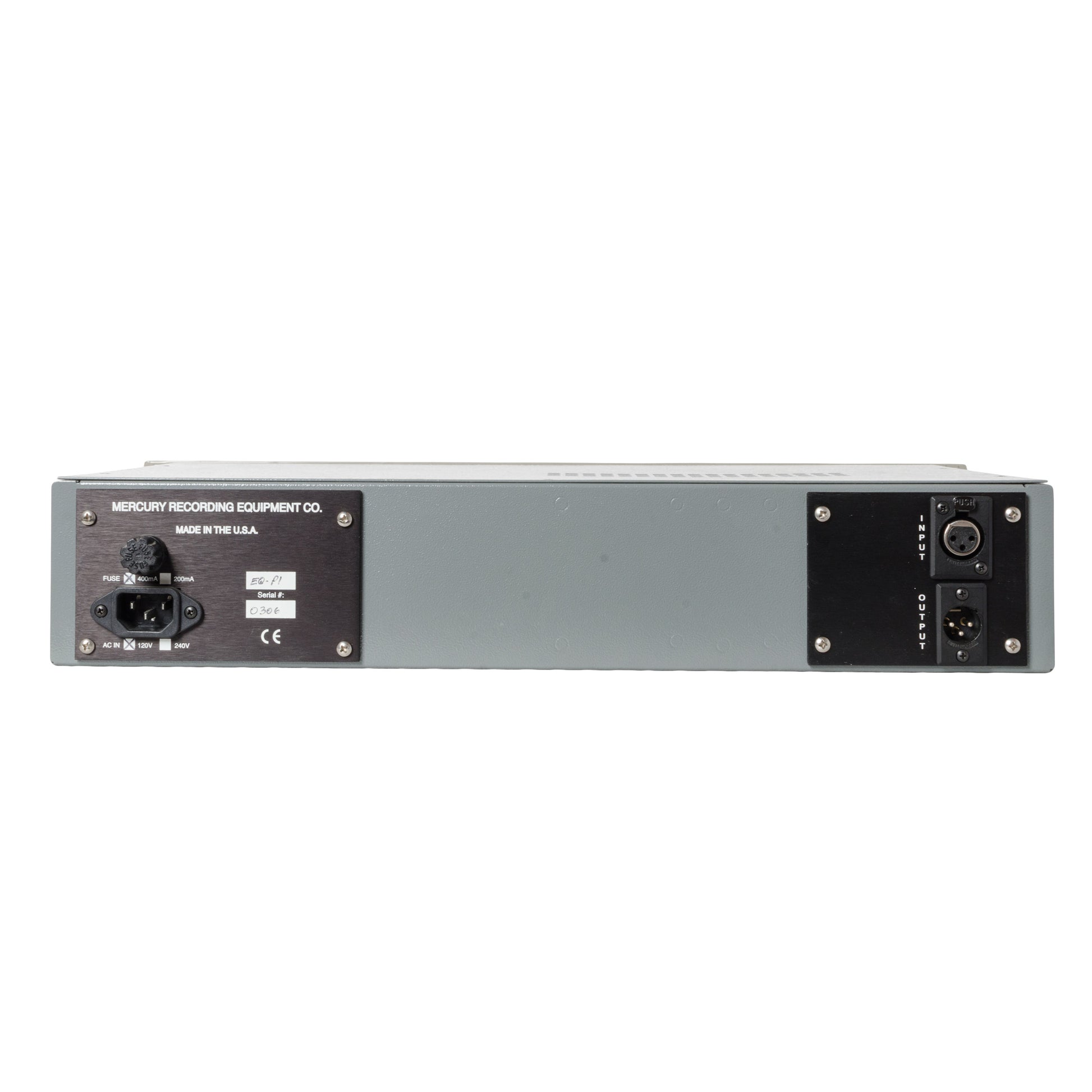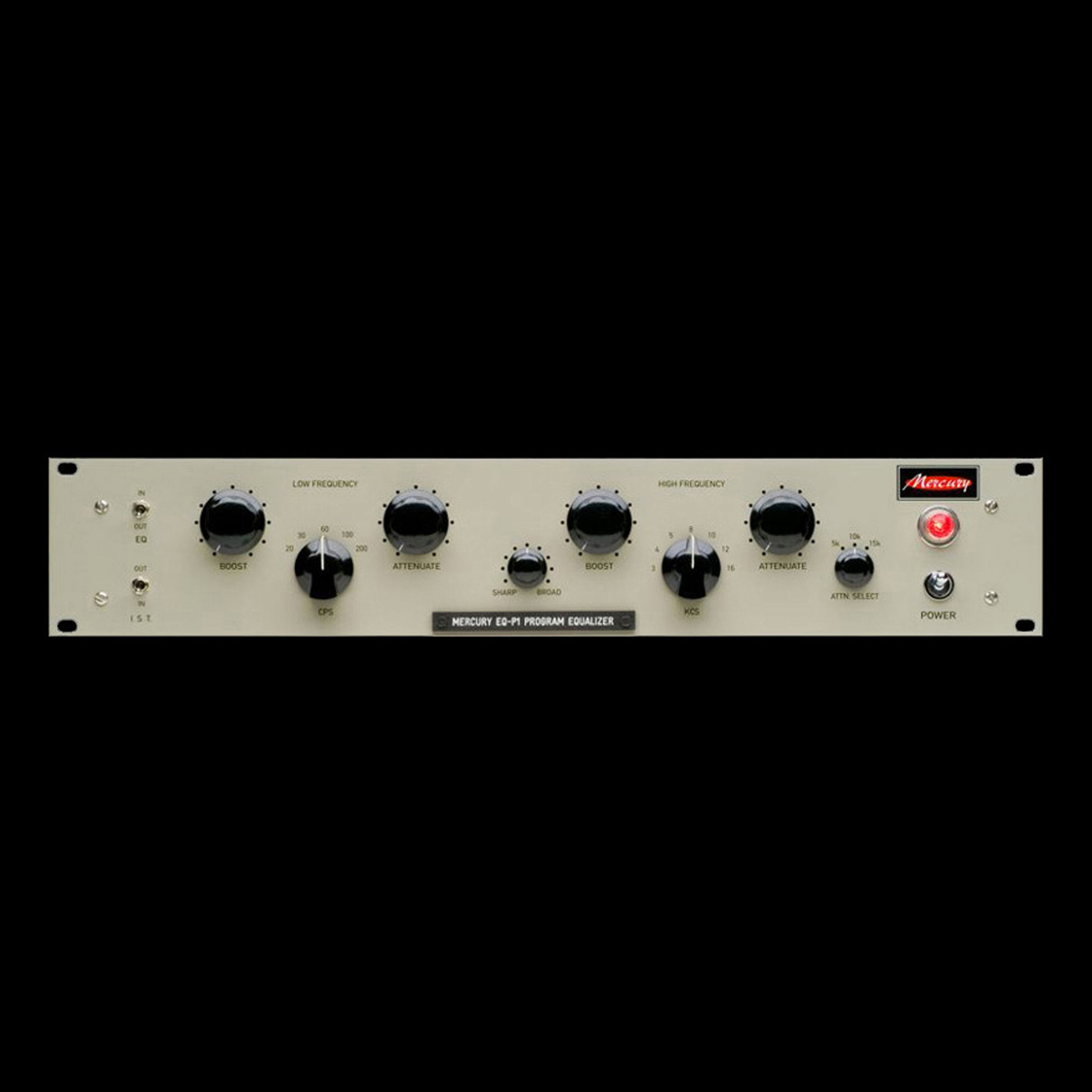



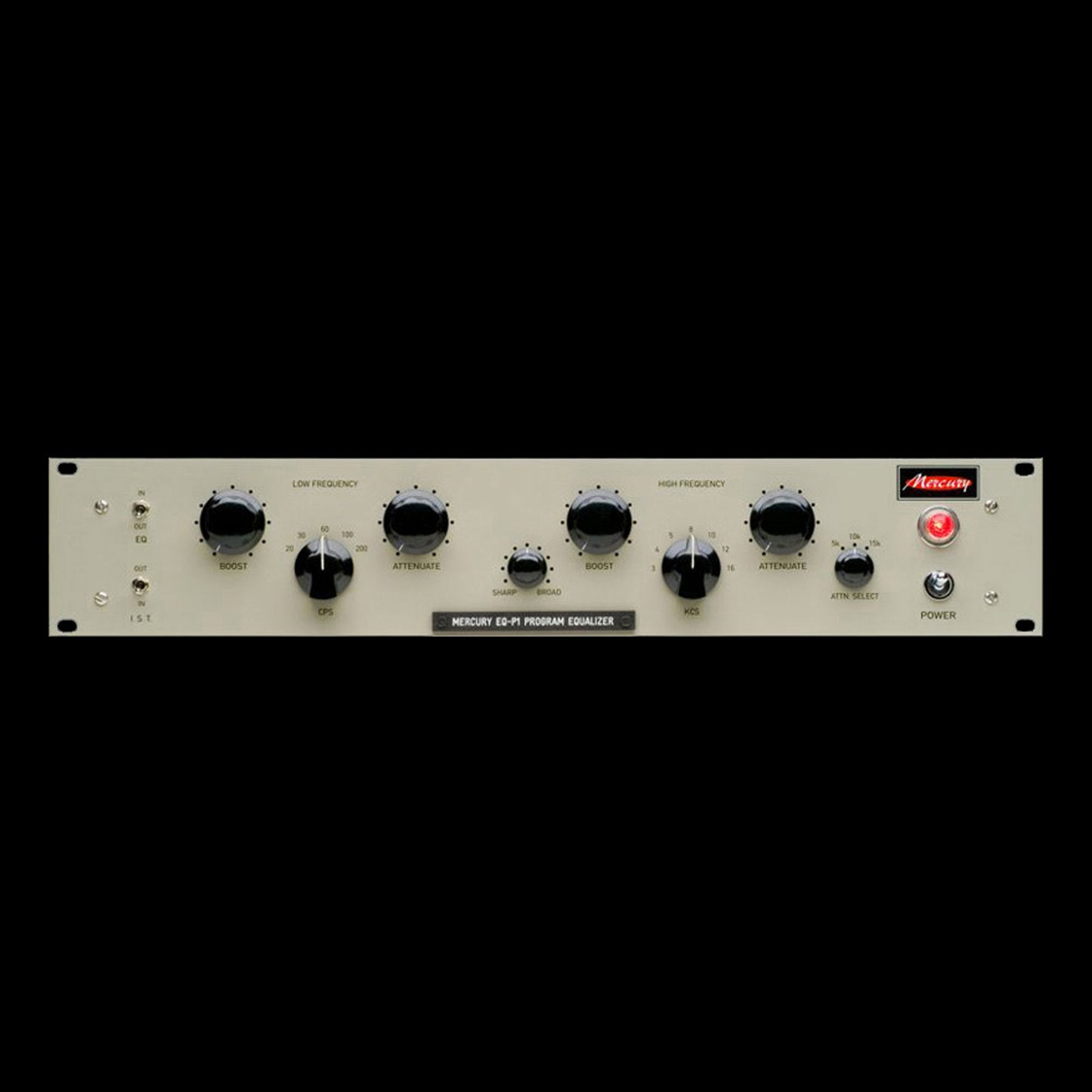
- Details
- Tech Specs
- Reviews
Pultec Equalizers are some of the rarest and most sought after studio tools in the industry today. Engineers lucky enough to be able to work with them find their musicality and warm tonality extremely important to their studio's "sound." The simple beauty of these EQs is unsurpassed!
The original Pultec equalizers were tools developed to deal with the limitations of recorded music. Limitations that most often manifest themselves in the highest and lowest frequencies of the program material. Pultecs were designed to bring back the life and musicality lost in the recording. Whether by accident or genius, nothing has been able to do it better. The interaction of the passive boosting and attenuating shelving eqs (not relying on negative feedback), as well as the transformers, tubes and other amplification circuitry all add to the incredibly musical character of the product. Working engineers try other types of equalizers, but always end up coming back to the Pultec as the equalizer of choice for those final touches.
Mercury Recording Equipment Co. is committed to recreating every magical nuance of the original in a modern production. The goal was that the Mercury EQ-P1 Program Equalizer would add that magic touch to music like the original, we achieved that goal. Mercury has tried to keep all elements in line with the original designer's ideas with only minor improvements. Adding a couple of extra frequencies for more flexibility and we use DC on the heaters (of the tubes) rather than AC for better performance as well as a new very quiet and stable power supply.
The Mercury EQ-P1 has transformer balanced input and output, with a fully balanced (push-pull) gain make up amplifier. Our new Mercury production utilizes only the highest quality passive components, while remaining true to the original production.
The only modernization feature on the unit is a user switchable (in/out) interstage transformer. In the original Pultec EQP this transformer was always in the signal path, however, realizing that some of today's engineers might want to remove it with the Mercury EQ-P1 Program Equalizer it is possible to do so with I.S.T. (Interstage Input Transformer) in/out switch, below the EQ in/out switch on the front panel. This takes the middle (interstage) transformer out of the circuit. Down, in the "in" position, it is more "vintage" like the original Pultec. Up, in the "out" position, it is a little more "open" and "airy" on the top. Either way, the input and output transformers are always in the circuit.

The Mercury EQ-H1 has a different amplifier than the Mercury EQ-P1 thus it has a different tone. Meaning the EQ-H1 and EQ-P1 sound different on the same application.
The key to the tone of the Pultec circuit is the amplifier, being that the EQ section is passive.
The EQ-H1 is more punchy and robust and the EQ-P1 is more open and silky. Although both sound amazing on any application and they are both multi-purpose tools (equalizers) in the studio, if you had both you could then pick and choose between applications. The Mercury EQ-H1 is warm and fluid but a bit "thicker" than the EQ-P1, thus the EQ-H1 shines on Thickening vocals, Bass, Kick, Snare, and Guitar etc... The Mercury EQ-P1 is great for Shaping vocals, Acoustic instruments, Guitar, Piano etc...
| Product Name | Mercury Recording Equipment EQ-P1 PULTEC-Style Program Equalizer |
|---|---|
| Brand | Mercury Recording Equipment |
| Condition | New |
| MPN | meqp1 |
| Shipping Option | Free Shipping to the Continental U.S. |
- Low Frequency Select (CPS; Cycles per second): 20, 30, 60, 100, 200 Hz
- Low Frequency Boost Control: Shelf Boost, 0dB to +13dB
- Low Frequency Attenuate Control: Shelf Atten. 0dB to -17dB
- High Frequency Select (KCS; kilocycles per second ): 3, 4, 5, 8, 10, 12, 16 kHz
- High Frequency Boost Control: Shelf Boost, 0dB to +16dB
- High Frequency Attenuate Control: 10k Shelf Attenuate, 0dB to -16dB
Mercury Recording Equipment EQ-P1 PULTEC-Style Program Equalizer
Pultec Equalizers are some of the rarest and most sought after studio tools in the industry today. Engineers lucky enough to be able to work with them find their musicality and warm tonality extremely important to their studio's "sound." The simple beauty of these EQs is unsurpassed!
The original Pultec equalizers were tools developed to deal with the limitations of recorded music. Limitations that most often manifest themselves in the highest and lowest frequencies of the program material. Pultecs were designed to bring back the life and musicality lost in the recording. Whether by accident or genius, nothing has been able to do it better. The interaction of the passive boosting and attenuating shelving eqs (not relying on negative feedback), as well as the transformers, tubes and other amplification circuitry all add to the incredibly musical character of the product. Working engineers try other types of equalizers, but always end up coming back to the Pultec as the equalizer of choice for those final touches.
Mercury Recording Equipment Co. is committed to recreating every magical nuance of the original in a modern production. The goal was that the Mercury EQ-P1 Program Equalizer would add that magic touch to music like the original, we achieved that goal. Mercury has tried to keep all elements in line with the original designer's ideas with only minor improvements. Adding a couple of extra frequencies for more flexibility and we use DC on the heaters (of the tubes) rather than AC for better performance as well as a new very quiet and stable power supply.
The Mercury EQ-P1 has transformer balanced input and output, with a fully balanced (push-pull) gain make up amplifier. Our new Mercury production utilizes only the highest quality passive components, while remaining true to the original production.
The only modernization feature on the unit is a user switchable (in/out) interstage transformer. In the original Pultec EQP this transformer was always in the signal path, however, realizing that some of today's engineers might want to remove it with the Mercury EQ-P1 Program Equalizer it is possible to do so with I.S.T. (Interstage Input Transformer) in/out switch, below the EQ in/out switch on the front panel. This takes the middle (interstage) transformer out of the circuit. Down, in the "in" position, it is more "vintage" like the original Pultec. Up, in the "out" position, it is a little more "open" and "airy" on the top. Either way, the input and output transformers are always in the circuit.

The Mercury EQ-H1 has a different amplifier than the Mercury EQ-P1 thus it has a different tone. Meaning the EQ-H1 and EQ-P1 sound different on the same application.
The key to the tone of the Pultec circuit is the amplifier, being that the EQ section is passive.
The EQ-H1 is more punchy and robust and the EQ-P1 is more open and silky. Although both sound amazing on any application and they are both multi-purpose tools (equalizers) in the studio, if you had both you could then pick and choose between applications. The Mercury EQ-H1 is warm and fluid but a bit "thicker" than the EQ-P1, thus the EQ-H1 shines on Thickening vocals, Bass, Kick, Snare, and Guitar etc... The Mercury EQ-P1 is great for Shaping vocals, Acoustic instruments, Guitar, Piano etc...
| Product Name | Mercury Recording Equipment EQ-P1 PULTEC-Style Program Equalizer |
|---|---|
| Brand | Mercury Recording Equipment |
| Condition | New |
| MPN | meqp1 |
| Shipping Option | Free Shipping to the Continental U.S. |
- Low Frequency Select (CPS; Cycles per second): 20, 30, 60, 100, 200 Hz
- Low Frequency Boost Control: Shelf Boost, 0dB to +13dB
- Low Frequency Attenuate Control: Shelf Atten. 0dB to -17dB
- High Frequency Select (KCS; kilocycles per second ): 3, 4, 5, 8, 10, 12, 16 kHz
- High Frequency Boost Control: Shelf Boost, 0dB to +16dB
- High Frequency Attenuate Control: 10k Shelf Attenuate, 0dB to -16dB
- Choosing a selection results in a full page refresh.
- Opens in a new window.


